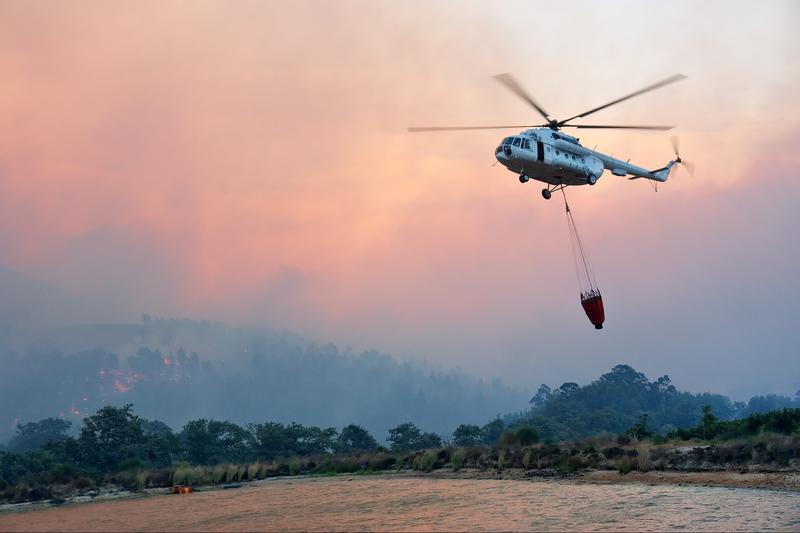Learn how to breathe using Buteyko when the air is hazardous.
Recently I’ve been receiving emails from people in California, Oregon, Montana, and other states asking how to breathe when the air is full of smoke from wildfires. I’ve also heard complaints from my neighbors in Crestone, Colorado about coughing, itchy eyes, and scratchy throats triggered by ashes in the air. Even though there were no fires in Crestone or nearby, here as in many places, the sky looked hazy due to a sizable wave of wildfires on the West Coast.
I need to admit that I did not experience any discomfort because pollutants in the air don’t substantially affect people whose Positive Maximum Pause is around 40-60 seconds or higher. Unfortunately, the Positive Maximum Pause of the majority of people is only 10-20 seconds or even lower; in this case, the smoky air causes suffering. (To understand the Buteyko breathing measurement system click here).
If the Positive Maximum Pause is low, unhealthy air will decrease it even further making the person feel unwell and triggering various symptoms, which can be related to the respiratory system or not. The good news is that by controlling your breathing by applying the Buteyko Breathing method, you should be able to minimize or prevent this situation. Below are my recommendations on how to do it.
How To Do It:
Breathe through your nose.
The nose is our ultimate air purifier: let it do its job. By breathing through your nose instead of the mouth, you will take in the minimum amount of pollutants or possibly none.
– If you are not able to inhale exclusively through your nose while talking, avoid unnecessary conversations especially if they take place outside. ( learn how to maintain nasal breathing while speaking. )
– Make sure that you don’t breathe through your mouth at night. If you discover that you do, switch to nasal breathing by taping your mouth with a small piece of gentle medical paper tape.
Minimize your air consumption.
Dr. Buteyko discovered that over-breathing is an addiction of modern times. According to him, most people consume 2-10 times more air than their bodies require. This means that when the air is smoky, many people take in 2-10 more ashes and other pollutants than they could. Switching to more natural, reduced patterns of breathing takes care of this problem. Here are some ways to accomplish it:
- Again, breathe through your nose. Nostrils’ openings are smaller than the orifice of the mouth; breathing through the nose reduces air consumption.
- Whether you breathe through your nose or mouth, try your best to inhale air slowly, gently and as little as possible. This should be an enjoyable process that does not create a feeling of being breathless. If it does, you are applying this technique incorrectly. Listen to this Breathing Normalization Meditations to learn how to practice this technique.
- If you were trained to use a belt to boost Breathing Normalization, apply this technique especially outdoors.
Stress is contagious. Stay unaffected.
Of course, the time of wildfires is stressful. Stress creates a domino effect negatively affecting breathing, lowering the level of CO2, and triggering health problems. To stay functional during these challenging times and shield your health, you need to decrease your stress level. Some people can do it by meditating or replacing their worrisome thoughts with positive affirmations. If you don’t belong to this category, you might consider using herbs for stress relief. I recommend Ashwagandha, St. John Wort, or Valerian Root. Dr. Buteyko was particularly fond of Valerian because it facilitates not only a calmer state of mind but also more peaceful breathing patterns.
Help your body generate CO2.
When air is full of smoke, most likely, you will be losing some CO2: make sure that you have enough to drop. Below are some simple and safe ways for creating a surplus of CO2:
– Long and gentle cardio exercise almost always increases Positive Maximum Pause by 5 seconds or more. When pollutants penetrate air, avoid exercising outside; instead, do it in an air-conditioned gym. Spend between 30 and 60 minutes on a treadmill or elliptical; avert heavy, noisy, and mouth breathing.
– Practice humming. While doing so, inhale through your nose only and have fun.
– If you learned how to do Breath Holds, do short (1-3 seconds) informal Breath Holds throughout a whole day. Dr. Novozhilov recommends doing between 500 and 1000 every day.
Use common sense: if your Positive Maximum Pause is low, stay inside in air-conditioned places.
Be Safe!


